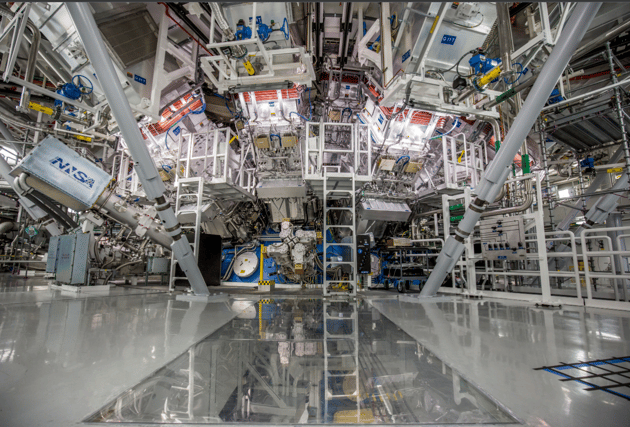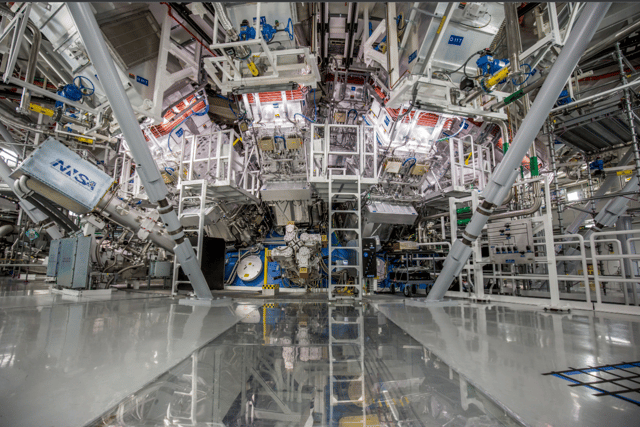Fusion energy breakthrough: what is fusion, how it works and how it differs from nuclear fission


A “major scientific breakthrough” in the decades-long quest to harness fusion, the energy that powers the sun and stars, has been announced. It has taken 60 years of research to reach the “historic” milestone, and it’s hoped fusion could be a future source of clean energy and an alternative to fossil fuels.
Researchers at the Lawrence Livermore National Laboratory in California for the first time produced more energy in a fusion reaction than was used to ignite it, something called net energy gain, the energy department said.
Advertisement
Hide AdAdvertisement
Hide AdThe achievement will pave the way for advancements in national defence and the future of clean power, officials said. US energy secretary Jennifer Granholm was appearing alongside Livermore researchers at a news conference in Washington.
“This is a landmark achievement for the researchers and staff at the National Ignition Facility who have dedicated their careers to seeing fusion ignition become a reality, and this milestone will undoubtedly spark even more discovery,” Granholm said in a statement.
White House science adviser Arati Prabhakar, called the fusion ignition “a tremendous example of what persistence can achieve” and “an engineering marvel beyond belief”.
What is fusion?
Fusion is a type of power generation and is the process that powers the Sun and other stars. Scientists have been working for decades to try and find a way to utilise it to produce energy.
Advertisement
Hide AdAdvertisement
Hide AdIn the 1960s, a group of pioneering scientists at LLNL hypothesised that lasers could be used to induce fusion in a laboratory setting. “We have had a theoretical understanding of fusion for over a century, but the journey from knowing to doing can be long and arduous,” said Dr. Arati Prabhakar
How does it work?
Fusion works when two light nuclei combine to form a single heavier nucleus, releasing a large amount of energy in the process. It is the opposite of nuclear fission - the technology used in nuclear power stations, where heavy atoms are split apart. As hydrogen has a single proton in its nucleus, it requires the least effort to attain fusion, and produces the most net energy output.


In order to undergo fusion, the fuel atoms need to be given enough kinetic energy to approach each other closely enough for the strong force to overcome the electrostatic repulsion. Ways of providing this energy include speeding up atoms in a particle accelerator, or heating them to high temperatures.
To produce energy from fusion on Earth, hydrogen gases – deuterium and tritium – are heated to over 100 million degrees Celsius. The gas becomes a plasma and the nuclei combine. A tiny fraction of the mass is converted into ‘fusion’ energy. However a huge amount of energy can come from very small amounts of fuel.
What benefit would fusion energy have?
Advertisement
Hide AdAdvertisement
Hide AdFusion energy is considered a clean power source and one which could help steer the world away from reliance on fossil fuels. It is widely-considered to be the most promising option for generating cleaner energy. The benefits of fusion energy have been hailed as being carbon emission free, low radioactive waste. In addition one kilogram of fusion fuel could provide the same amount of energy as 10 million kilograms of fossil fuel.
“This astonishing scientific advance puts us on the precipice of a future no longer reliant on fossil fuels but instead powered by new clean fusion energy,” U.S. Senate Majority Leader Charles Schumer (NY) said.
Meanwhile, U.S. Secretary of Energy Jennifer Granholm said: “The Biden-Harris Administration is committed to supporting our world-class scientists — like the team at NIF — whose work will help us solve humanity’s most complex and pressing problems, like providing clean power to combat climate change and maintaining a nuclear deterrent without nuclear testing.”
Is fusion energy ready to be used as a power source?
No. While the latest development is considered a huge breakthrough it could be some time before fusion energy is readily available. The milestone at the NIF was 60 years in the making, and was the first controlled fusion experiment to reach such a point.
Advertisement
Hide AdAdvertisement
Hide AdMany more advanced science and technology developments would be needed to achieve simple, affordable energy from fusion to power homes and businesses. The US Department of Energy is currently restarting a broad-based, program to explore this.
“The pursuit of fusion ignition in the laboratory is one of the most significant scientific challenges ever tackled by humanity, and achieving it is a triumph of science, engineering, and most of all, people,” LLNL Director Dr. Kim Budil said.
“Crossing this threshold is the vision that has driven 60 years of dedicated pursuit — a continual process of learning, building, expanding knowledge and capability, and then finding ways to overcome the new challenges that emerged. These are the problems that the U.S. national laboratories were created to solve.”
Comment Guidelines
National World encourages reader discussion on our stories. User feedback, insights and back-and-forth exchanges add a rich layer of context to reporting. Please review our Community Guidelines before commenting.
